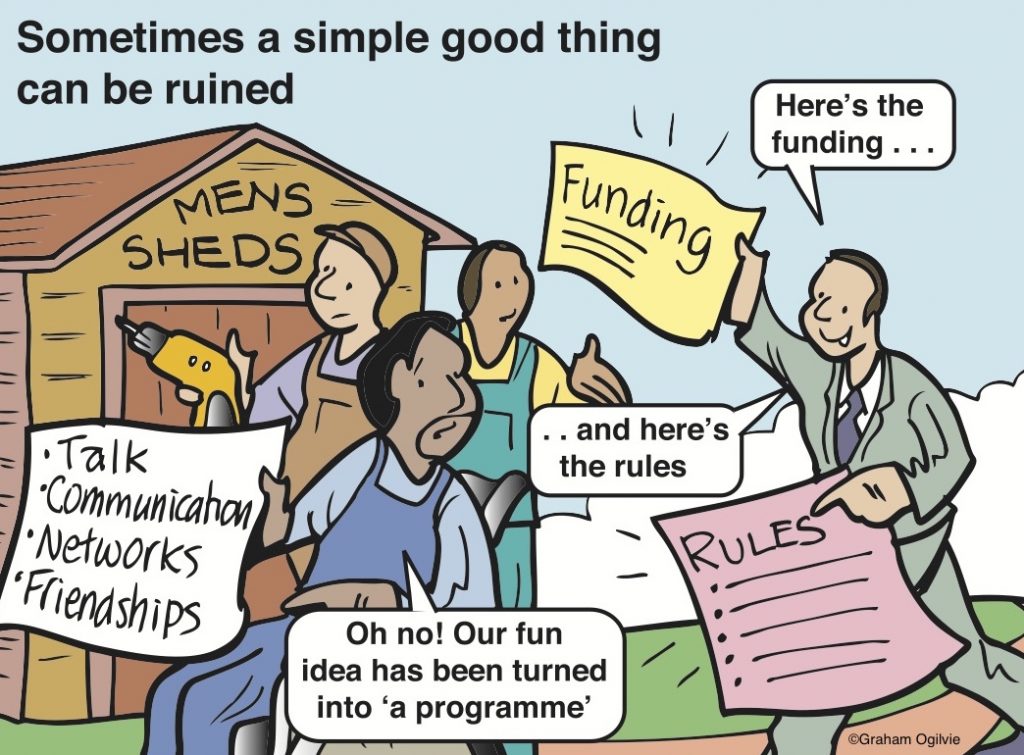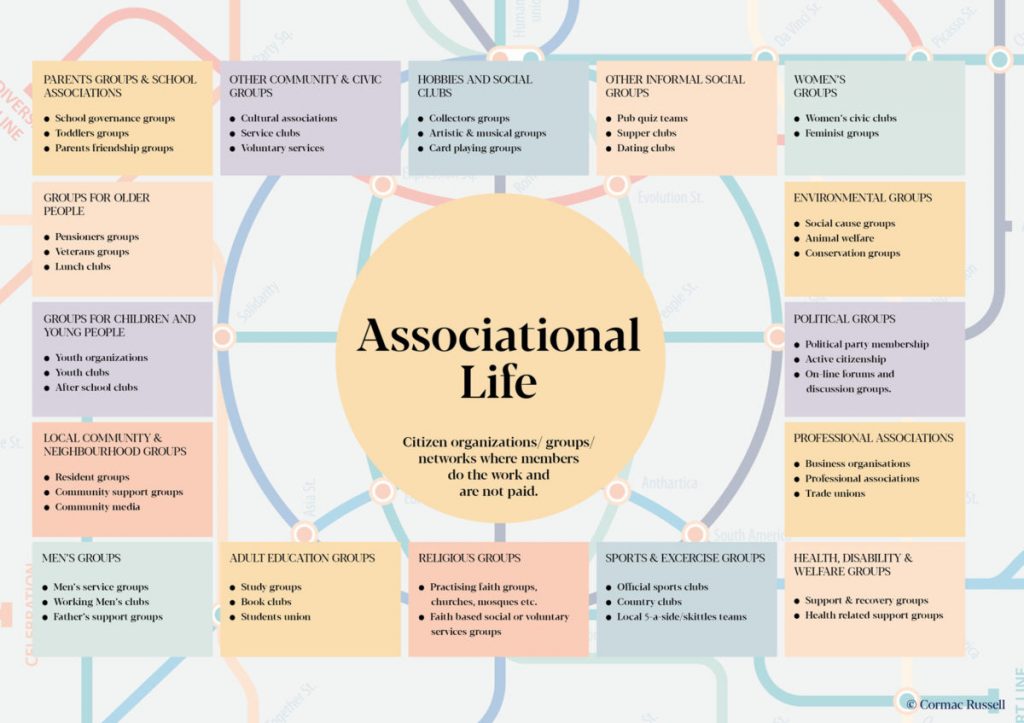
Common Good and the asset based approach
How should we become communities of place? What works? Here we take a brief look at the Asset-Based Community Development approach. We’ll see how ‘programmes’ are part of the problem, and how ABCD frees up people to build the Common Good together, using their own gifts and skills.
The ‘Common Good’ is often defined as the set of conditions in which every individual in the community can flourish. But we prefer to talk about ‘the Common Good’ as something we build together, because those conditions need to be created by us, through our shared action. Flourishing communities cannot be built from the top down, or from the outside in, but only from the inside out and bottom up.
We therefore talk about the practice of the Common Good, which needs everyone to take part and take responsibility, according to their vocation and ability. This is how healthy neighbourhoods, communities and workplaces will emerge.
The Common Good approach requires that we engage together across our differences, recognising each other’s gifts, despite our different backgrounds and despite strongly-held differing views. So one-to-one conversations are essential and the principles of Common Good Thinking can help us take good decisions.

The Asset Based Community Development idea also starts with noticing gifts – gifts that are already present among the people in a community. This approach is practical and human, it does not require a ‘programme’. It just needs people in local associations coming together and making connections: this is how civil society is strengthened.
The approach requires a shift in mindset: rather than a starting point that is ‘needs’ or ‘deficit’ based, it involves a ‘gifts’ or ‘asset-based’ approach. This resists seeing human beings as ‘users’ or ‘clients’ of services or consumers who buy things. An ABCD approach is about people getting on with activities that benefit the community together, it is not about ‘top down’ interventions. It recognises people’s dignity, that each person’s contribution is of value. It is through belonging and participating like this that we discover that the opposite of ‘client’ is ‘citizen’.
We can see how ABCD can release communities from becoming atomised through reliance on public services or on outsourced consumer-based solutions. It enables people to become interdependent with each other in association and thereby free and connected. The approach is founded on three key principles:
1) That every single person, regardless of where they live or how much they earn, has something to offer others.
2) That flourishing communities cannot be built from the top down, or the outside in, but only from the ‘inside out’.
3) That relationships are absolutely key to making change happen.
Building relationships, person by person, and joining together in shared purpose is the way to generate communities that can develop relational power.

The primary goal in ABCD community building at neighbourhood scale is not the development of community leaders; it’s the deepening of associational life and collective power. Community leaders are important contributors towards that shared ambition; not the prime producers of it.
Take a few minutes to watch Cormac Russell giving a powerful talk about ABCD in the video below or read his book Rekindling Democracy.
Jenny Sinclair
With thanks to Nurture Development.
